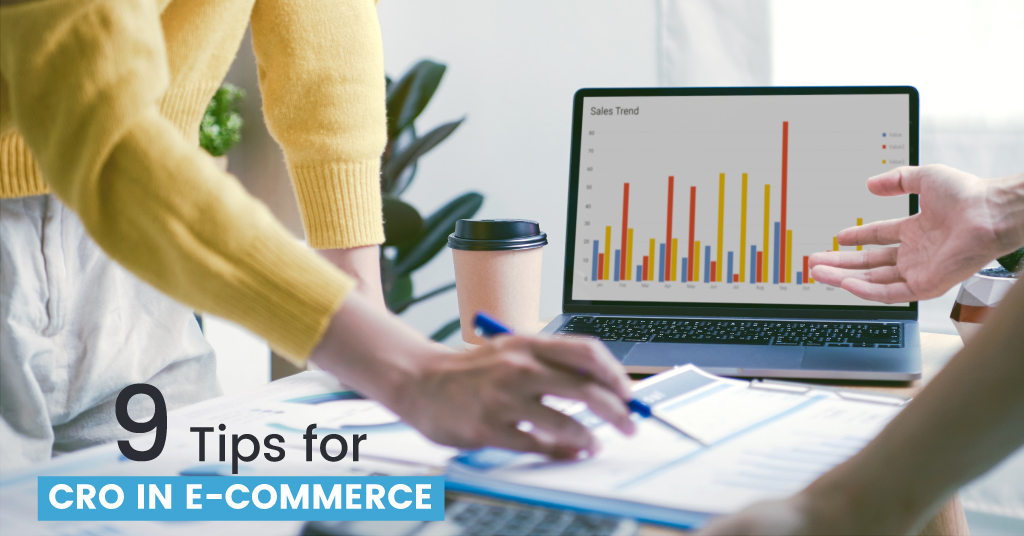I hope you enjoy reading this blog post.
If you want to get more traffic, Contact Us

Click Here - Free 30-Minute Strategy Session
Be quick! FREE spots are almost gone for this Month. Free Quote

Conversion Rate Optimisation (CRO) focuses on improving the percentage of website visitors who complete a desired action, such as making a purchase or signing up for a newsletter. For e-commerce, it plays a pivotal role in driving revenue without increasing traffic costs. By analysing user behaviour and identifying friction points, CRO ensures a seamless shopping experience.
Effective CRO addresses critical areas such as page load speed, mobile responsiveness, and persistent cart abandonment. It prioritises personalisation, allowing stores to tailor experiences based on customer preferences. Implementing CRO fosters better ROI, turning casual browsers into loyal buyers. Its importance lies not only in sales growth but also in building lasting customer trust.

Click Here – Free 30-Minute Strategy Session
Be quick! FREE spots are almost gone for this Month
Understanding the customer journey is essential for addressing points of friction that hinder conversions. Start by mapping out each stage of the journey, from the initial landing page visit to checkout completion. Use tools like heatmaps and session recordings to visualise user behaviour and pinpoint drop-off areas.
Look for patterns such as abandoned carts, lengthy form completions, or confusion with navigation. Metrics like bounce rates, session duration, and exit pages provide valuable clues. Conduct surveys or interviews to gather qualitative insights directly from users.
Testing solutions, such as optimising forms or simplifying navigation, ensures improvements align with user needs while boosting conversions effectively.
A landing page should be visually appealing, user-friendly, and designed to guide visitors towards a specific action. Start by ensuring a clear and concise headline that highlights the unique value proposition. Supporting visuals play a key role; use high-quality images or videos relevant to the offering.
To maintain focus, ensure minimal distractions by reducing unnecessary elements like extra links or cluttered menus. Incorporate persuasive and benefit-focused copy in body text while keeping it scannable with bullet points or short paragraphs.
Use compelling calls-to-action (CTAs) that create urgency, such as “Shop Now” or “Limited Offer”. Test different designs, colour palettes, and CTA placements to optimise conversion rates.
A/B testing allows e-commerce stores to compare two versions of a webpage or element to determine which performs better. By presenting variant A to one audience segment and variant B to another, businesses can assess metrics such as click-through rates, conversion rates, or revenue.
Key elements to test include headlines, call-to-action buttons, product page layouts, or pricing displays. It is essential to test one variable at a time to isolate its impact.
These experiments should run long enough to gather statistically significant data, ensuring accurate insights. Regularly iterating based on test findings helps fine-tune the online shopping experience.
A delay of even a few milliseconds can significantly impact user experience and conversion rates. Faster loading times improve customer satisfaction, reduce bounce rates, and increase the likelihood of purchases. Studies show that pages loading in under two seconds have notably higher engagement.
Optimising site speed involves several strategies:
Slow websites frustrate customers, making them less likely to return. Each millisecond optimised could be the difference between a sale and an abandoned cart.
A well-crafted call-to-action (CTA) is essential for driving conversions in any e-commerce store. To create effective CTAs, it is vital to use action-oriented language that encourages immediacy, such as “Buy Now” or “Get Started Today.” CTAs should stand out visually with contrasting colours and prominent placement to grab attention. Personalisation is equally critical—customising CTAs based on the customer’s journey can significantly improve engagement. Incorporating scarcity or urgency, like “Limited Stock Available,” can further motivate decision-making. Testing different variations, including button text, design, and positioning, ensures optimised results. Continuous optimisation is key to maximising CTA performance.
Social proof acts as a psychological cue, making customers feel more confident in their buying decisions. E-commerce stores can effectively use multiple forms of social proof to increase trust and encourage conversions. Key examples include:
Implementing social proof consistently across product pages and marketing efforts maximises its impact, helping hesitant customers trust your brand and complete their purchase.
A smooth checkout process is essential for reducing cart abandonment rates and improving customer satisfaction. Optimising the experience means eliminating unnecessary steps while maintaining security and ease of use.
Reducing friction at this stage encourages purchases and enhances trust with buyers.
With an increasing number of consumers shopping on their smartphones, mobile optimisation has become essential for any e-commerce store. Websites must be responsive, ensuring seamless navigation and fast load times on smaller screens. Clear, touch-friendly buttons and concise menus improve the user experience. Mobile-friendly checkout processes, integrating features like autofill options and simplified payment gateways, reduce friction and cart abandonment rates.
Additionally, ensuring images and content scale properly prevents user frustration. Prioritising mobile page speed improves search engine rankings and user engagement. Highlighting mobile-specific features, such as app-exclusive discounts, caters directly to on-the-go shoppers and incentivises purchases.
Implementing data-driven insights enables e-commerce businesses to refine their conversion rate optimisation (CRO) strategies effectively. Analysing user behaviour through tools like Google Analytics or heatmaps uncovers patterns and areas for improvement. For instance, high bounce rates on certain pages could signal usability issues or misaligned content.
Segmentation is essential; understanding distinct user groups such as returning customers, first-time visitors, or mobile users allows for tailored strategies. A/B testing further validates changes by comparing variations and measuring their impact. Monitoring key performance indicators (KPIs) such as click-through rates, page load times, and checkout abandonment ensures consistent evaluation.
By iterating on findings, businesses can identify long-term trends, adapt rapidly to shifting needs, and deliver optimised experiences.

LEAVE A REPLY